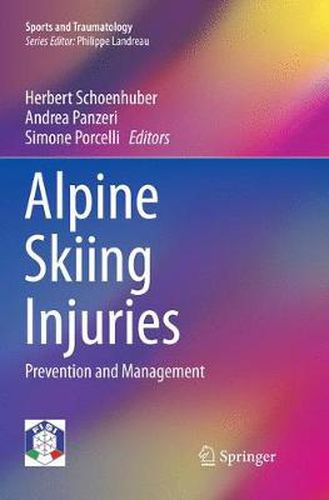Readings Newsletter
Become a Readings Member to make your shopping experience even easier.
Sign in or sign up for free!
You’re not far away from qualifying for FREE standard shipping within Australia
You’ve qualified for FREE standard shipping within Australia
The cart is loading…






This book provides detailed information on the different forms of injury that are associated with training for and participation in Alpine skiing, covering risk factors and epidemiology, incidence, injury patterns, and, above all, preventive strategies and current management approaches. Conditions addressed in individual chapters include concussion, traumatic dislocations due to high-energy trauma or inappropriate movements, overuse injuries resulting from dry-land training or skiing on snow, the fractures typically associated with present-day Alpine skiing accidents, and musculoskeletal disorders. The importance of a sound understanding of biomechanics and physiological systems for the design of suitable training protocols and trauma prevention is clearly explained, and in-depth information and guidance are provided on training and testing for elite skiers and return to sporting activity following injury. Among the other topics addressed in individual chapters are the relationship of changes in skiing equipment over recent decades to particular types of injury and the potential consequences of exposure to hypobaric hypoxia and other stressors at high altitude. The book will be of great value to all medical professionals who work with or care for Alpine skiers, as well as for trainers and the skiers themselves.
$9.00 standard shipping within Australia
FREE standard shipping within Australia for orders over $100.00
Express & International shipping calculated at checkout
This book provides detailed information on the different forms of injury that are associated with training for and participation in Alpine skiing, covering risk factors and epidemiology, incidence, injury patterns, and, above all, preventive strategies and current management approaches. Conditions addressed in individual chapters include concussion, traumatic dislocations due to high-energy trauma or inappropriate movements, overuse injuries resulting from dry-land training or skiing on snow, the fractures typically associated with present-day Alpine skiing accidents, and musculoskeletal disorders. The importance of a sound understanding of biomechanics and physiological systems for the design of suitable training protocols and trauma prevention is clearly explained, and in-depth information and guidance are provided on training and testing for elite skiers and return to sporting activity following injury. Among the other topics addressed in individual chapters are the relationship of changes in skiing equipment over recent decades to particular types of injury and the potential consequences of exposure to hypobaric hypoxia and other stressors at high altitude. The book will be of great value to all medical professionals who work with or care for Alpine skiers, as well as for trainers and the skiers themselves.